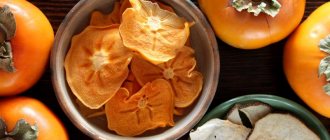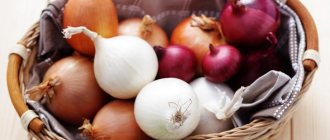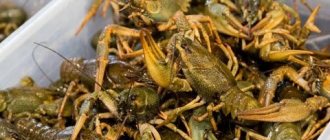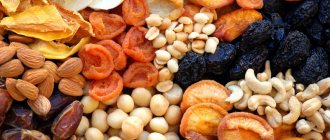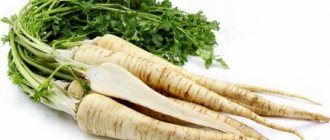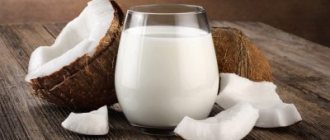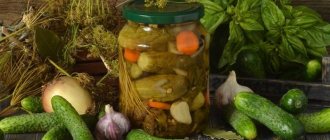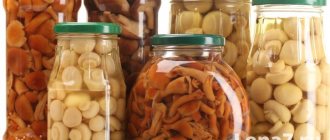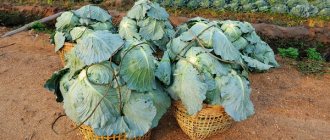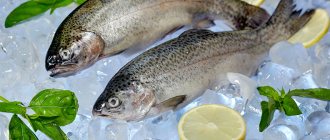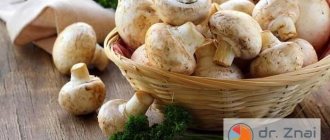What are the benefits of persimmon
Translated, “persimmon” (Diōspyros) means “wheat of Zeus” or “food of the gods.” This fruit is highly valued for its beneficial qualities and healing properties. Persimmon is rich in iodine and vitamin C. In addition, it contains other vitamins and microelements.
The amount of nutrients in the fruit depends on the area and climatic conditions in which it grew. So, the closer to the sea the planting, the more useful iodine in the fruits. When purchasing persimmons, it is advisable to look at where they came from.
How to choose the right one
The fruits are carefully examined, paying attention to the condition of the skin. It should be glossy and smooth, without black lines or damage.
If the stalk is dry and the peel is shiny, the fruits are still ripe on the branch. Unripe ones are pale orange or yellow. When ripe, the skin is bright orange.
The pulp of ripe fruits should not be hard when pressed. In cross section it is jelly-like.
Many people have heard that a variety such as the kinglet does not knit. However, persimmon and kinglet are not different species, but different fruits that are found on the same tree. The wren is the fruit of a pollinated flower. It has a sweet taste and an abundance of seeds. There are ring cracks at the top. The wren, even when hard, does not knit. However, the kinglet is stored much less than persimmon. This should be taken into account if fruits are purchased for long-term storage.
Wren and persimmon are actually the same fruit
Persimmons stop knitting only when they are ripe. However, when mature, it does not tolerate transportation and storage well. That’s why they bring it to Russia unripe. You have to freeze it or wait until it’s ripe.
In order to remove the astringent taste, persimmons are placed in the freezer for a day and then thawed in cold water.
Products supplied from Spain, as a rule, do not knit even when unripe. Before transportation, the fruits are treated in special installations with carbon dioxide, which destroys tannin and removes the astringent taste. This treatment does not pose any harm to health.
The benefits and harms of persimmons. Medical indications/contraindications
Persimmons contain many vitamins, especially A, C and B; as well as trace elements: iodine, iron, calcium, potassium, phosphorus, manganese.
Cardiologists recommend eating 1 persimmon per day. The substances it contains help strengthen the heart muscle and normalize the rhythm.
The fruits help fight coughs and sore throats.
Research is being conducted on the properties of persimmon in the treatment of cancer, atherosclerosis and hypertension.
Persimmons have contraindications. The astringent taste of the fruit is due to the tannin substance. It can lead to the formation of a special clot in the stomach, which must be removed surgically. Tannin binds to poorly digestible fiber, which lingers in the stomach. Protein, such as milk, can enhance the reaction. If you drink milk after persimmon, a dense, polymer-like lump will form in your stomach. With weak motor skills of the housing and communal services, the lump does not move, it lingers.
The astringent taste can be removed using the old Valencian method. The persimmons are placed in a tightly closed container and a little strong alcohol, such as vodka, is poured onto the bottom and left for a day. Under the influence of alcohol vapors, the astringent taste will disappear.
People with reduced gastrointestinal motility and low acidity are not recommended to eat more than one fruit per day.
Possibilities of kitchen appliances
When it is not possible to prepare dried fruits in the fresh air, you have to use methods on how to dry persimmons in an apartment. In a city apartment, kitchen appliances come to the rescue.
Procedure in the oven and electric dryer
The process usually takes about two hours. With a little heat from the electric oven, the time can be extended to seven hours. Readiness is determined by the crispy crust on the surface of the persimmon. If it is not there yet, then dry it for another half hour or hour. Dried persimmons are placed loosely in large sealed containers.
Using an electric dryer, the procedure at a temperature of sixty degrees will take approximately eight hours, and large thick slices are dried for up to twenty hours. As before, when preparing for drying, persimmons are washed, blotted with water, cut and sprinkled with lemon juice. Checking for readiness is the same as the crispiness of the crust develops.
Persimmon storage
It is not enough to choose the right persimmon. You need to be able to preserve it for as long as possible. To do this, you need to know the terms and conditions of storage.
The shelf life under different conditions is:
- dried for up to 2 years;
- frozen for up to 1 year;
- in the refrigerator for up to 3 months;
- at room temperature for several days, but not more than 1 month.
I keep fruits fresh best at a temperature of 0- +1 °C with a humidity of up to 90%.
The optimal temperature regime for fruits is considered to be from 0 to +1 °C. In the refrigerator, persimmons should be stored in the fruit compartment and temperature changes should not be allowed. Air humidity should reach 90%.
Preparation of whole dried fruits
How to properly dry it where the sun does not constantly pamper you with its warmth? Those who dry persimmons offer methods to choose from depending on specific conditions.
If there is a need to dry persimmons whole, then do this in dry rooms with ventilation. Hang in bunches so that the berries do not touch at all. Sometimes they are laid out on a surface lined with wax paper, palm-width apart, with a little flour sprinkled on top. Dry until the persimmon acquires a red-brown hue.
Storage methods
There are several ways. They depend on the degree of fruit ripening and their quantity.
Without refrigerator
At room temperature without refrigeration, persimmons can be stored for only a few days. To increase this period, the fruits are placed in a dark place, away from heat sources. It is necessary to ensure good air flow and high humidity. At low humidity, persimmons become wrinkled. Avoid the proximity of other fruits, especially bananas, apples, tomatoes. Near them, persimmons will overripe and spoil faster.
As a rule, the fruits are left at room temperature to ripen. You need to inspect them regularly so as not to miss the first signs of damage. You should immediately put it in the refrigerator, freezer, make jam, dry it or use it.
Drying/drying
Dried and dried persimmon is a popular and healthy product that preserves all vitamins and microelements. If the drying technology is followed and stored correctly, the product can be suitable for consumption for 2 years.
Dry as follows:
- Rinse thoroughly and dry with paper towel.
- To peel.
- Cut into slices. If left whole, the drying process will be delayed.
- Place on a baking sheet and dry either at room temperature with good air access, or in the oven at +60°C. The oven door is left ajar.
Hard varieties are best suited for drying.
Store dried persimmons in linen bags in small portions so that natural ventilation occurs and mold does not form. It is unacceptable to store in plastic bags.
The bags are placed in a dark, cool and dry place, such as a pantry.
In order to prevent damage to persimmons by insects, the bags are pre-soaked in a concentrated saline solution and then dried.
Supplies should be regularly checked for mold and insects.
In a refrigerator
In the refrigerator, persimmons are stored in the lower fruit compartment. Ideal temperature is from 0 to +1°C.
Should not be placed in plastic bags, because... air access is required. The fruits are placed in a container without packaging or pre-placed in paper bags. In polyethylene, persimmons will rot.
The shelf life of hard, unripe persimmons in the refrigerator is up to 3 months. The more mature the fruits, the shorter the shelf life.
To ripen persimmons, place them in the same bag with bananas or apples. These fruits promote ripening.
Cut persimmons are placed in the refrigerator for no more than 3 days.
If previously frozen, the shelf life in the refrigerator is up to 7 days.
In the freezer
Both whole persimmons and cut into pieces are placed in the freezer. Sometimes washed and dried fruits are poured with sugar syrup before freezing. In such conditions, the fruit can be stored for up to 1 year.
After defrosting, the structure of the pulp may become looser, but this storage method will not affect the taste and beneficial properties.
It cannot be re-frozen.
Defrost persimmons by placing them in cold water. If placed in hot or warm liquid, the skin will burst.
Other methods
If there is a cellar or a glazed balcony, then the fruits are placed in wooden boxes in 1 or 2 layers, making sure that there is air access. The bottom layer is placed with the stalk down, the top layer with the stalk up.
For better preservation, they are sprinkled with sawdust to prevent the fruits from touching each other.
Regularly monitor the condition of the crop, removing rotting specimens.
In such conditions, persimmons can be stored for up to 2-3 months. When fully ripened, the fruits are moved to the refrigerator.
Features of freezing
At home, persimmons are frozen to get rid of the astringent taste. It is also easy to store berries in the freezer for a long time. It will last well for up to a year. The only point is that it needs to be stored at a temperature of -15 degrees, or lower.
What can be stored in:
- cling film;
- polyethylene, plastic bag;
- containers;
- silicone containers.
What you can't do:
- paper, parchment;
- ceramics, glass;
- foil.
The basic rule is to choose materials that are resistant to low temperatures and maintain tightness. The delicate berry does not have a pronounced aroma. At the same time, it actively absorbs foreign odors. It is also important to properly store figs, dried apricots, rose hips and other products.
Freezing methods at home:
- entirely. We recommend storing 1-3 pieces in a bag. Or wrap individually in cling film at least twice. Securely sealed on all sides;
- in pieces. Place the slices in bags or containers and close them. It is more convenient to store, use frozen pieces, then poured into a container. They don't stick together;
- puree. A convenient way to store ripe, soft persimmons. Grind in a convenient way, pack into molds, and freeze.
The nuances of long-term storage of persimmons
You can add granulated sugar, lemon juice, and zest to persimmon puree. You will get a full-fledged dessert, natural fruit ice. Sometimes several types of berries and fruits are mixed.
The only correct way to defrost at home is to keep the product at a low positive temperature. Refrigerator shelf fits. In autumn, spring, and warm winter they take it out onto the balcony or loggia.
At +1-7 degrees, the persimmon will gradually melt with minimal loss of properties. The process will take about 8-12 hours. When there is no time to wait, use a microwave oven with the appropriate function. The usual heating mode will ruin the persimmon.
How to use if there is a lot or the product is about to expire
If you have a large amount of persimmon or its shelf life is coming to an end, it can be used to make various compotes and culinary dishes.
Recipes
Persimmon jam
When heated, the amount of tannin increases. Jam may have a peculiar taste. Therefore, for production you need to choose ripe fruits.
Persimmon jam can be stored in the refrigerator for up to 12 months. To prevent it from souring, you must follow proven recipes during production.
Here is one of them with the addition of pectin, which makes the jam thicker.
You will need:
- 1 kg of persimmon;
- 0.5 kg. Sahara;
- 1 lemon
- pectin/gelin;
- 0.7 l. water.
Cooking method:
- Wash and dry the fruits.
- Remove the skin and chop finely.
- Mix with granulated sugar, add lemon.
- Place persimmons with sugar in boiling water and cook over moderate heat for 1 hour.
- A quarter of an hour before ready, add gelatin, following the instructions on the package.
- Pour the finished jam into sterilized jars.
The finished product should be stored in the refrigerator for 6 months.
